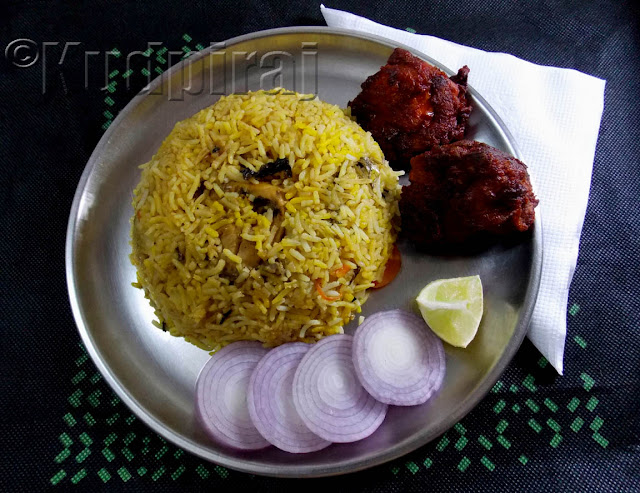Just wondering what name should I give to the new mushroom paneer dish that Meena made today for dinner! She experimented, making some delicious dish with left over mushrooms and crumbled home made paneer for me to eat along with phulkas.
I put a wall post past midnight on Kudpiraj's Garam Tawa page in Facebook - SUGGEST A NAME FOR THIS DISH AND WIN A VIRTUAL PRIZE!
Within 2 hours, got over a 100 responses. Out of the 11 names that I chose today, one emerged as the clear winner. She is Ms. Anita Kamath Pai from Mumbai. This dish has been named as per her winning suggestion - "Dhingri Paneer Laziz Nazakat".

Ingredients:
Mushroom - 50Gms quartered
Paneer - 25Gms crumbled
Ginger Garlic paste - 1/4 Tsp
Tomato - 1 small chopped
Onion - 1/4 chopped
Salt and pepper
Green Chilli - 1 minced
Cumin powder - A pinch
Turmeric powder - A pinch
Coriander greens - 1 sprig chopped
Oil - 1/2 Tsp
Lemon - a small wedge

Method:
Heat oil, fry ginger garlic paste along with chopped onions, minced green chilli and chopped tomato.
When the raw smell disappears, add salt and pepper, turmeric and cumin powder, followed by the crumbled paneer and quartered mushrooms.
Cover and cook till mushrooms are cooked and the water content evaporates almost 90%.
Garnish with coriander greens and squeeze lemon before serving with hot phulkas.
I put a wall post past midnight on Kudpiraj's Garam Tawa page in Facebook - SUGGEST A NAME FOR THIS DISH AND WIN A VIRTUAL PRIZE!
Within 2 hours, got over a 100 responses. Out of the 11 names that I chose today, one emerged as the clear winner. She is Ms. Anita Kamath Pai from Mumbai. This dish has been named as per her winning suggestion - "Dhingri Paneer Laziz Nazakat".

Ingredients:
Mushroom - 50Gms quartered
Paneer - 25Gms crumbled
Ginger Garlic paste - 1/4 Tsp
Tomato - 1 small chopped
Onion - 1/4 chopped
Salt and pepper
Green Chilli - 1 minced
Cumin powder - A pinch
Turmeric powder - A pinch
Coriander greens - 1 sprig chopped
Oil - 1/2 Tsp
Lemon - a small wedge

Method:
Heat oil, fry ginger garlic paste along with chopped onions, minced green chilli and chopped tomato.
When the raw smell disappears, add salt and pepper, turmeric and cumin powder, followed by the crumbled paneer and quartered mushrooms.
Cover and cook till mushrooms are cooked and the water content evaporates almost 90%.
Garnish with coriander greens and squeeze lemon before serving with hot phulkas.








.jpg)











































